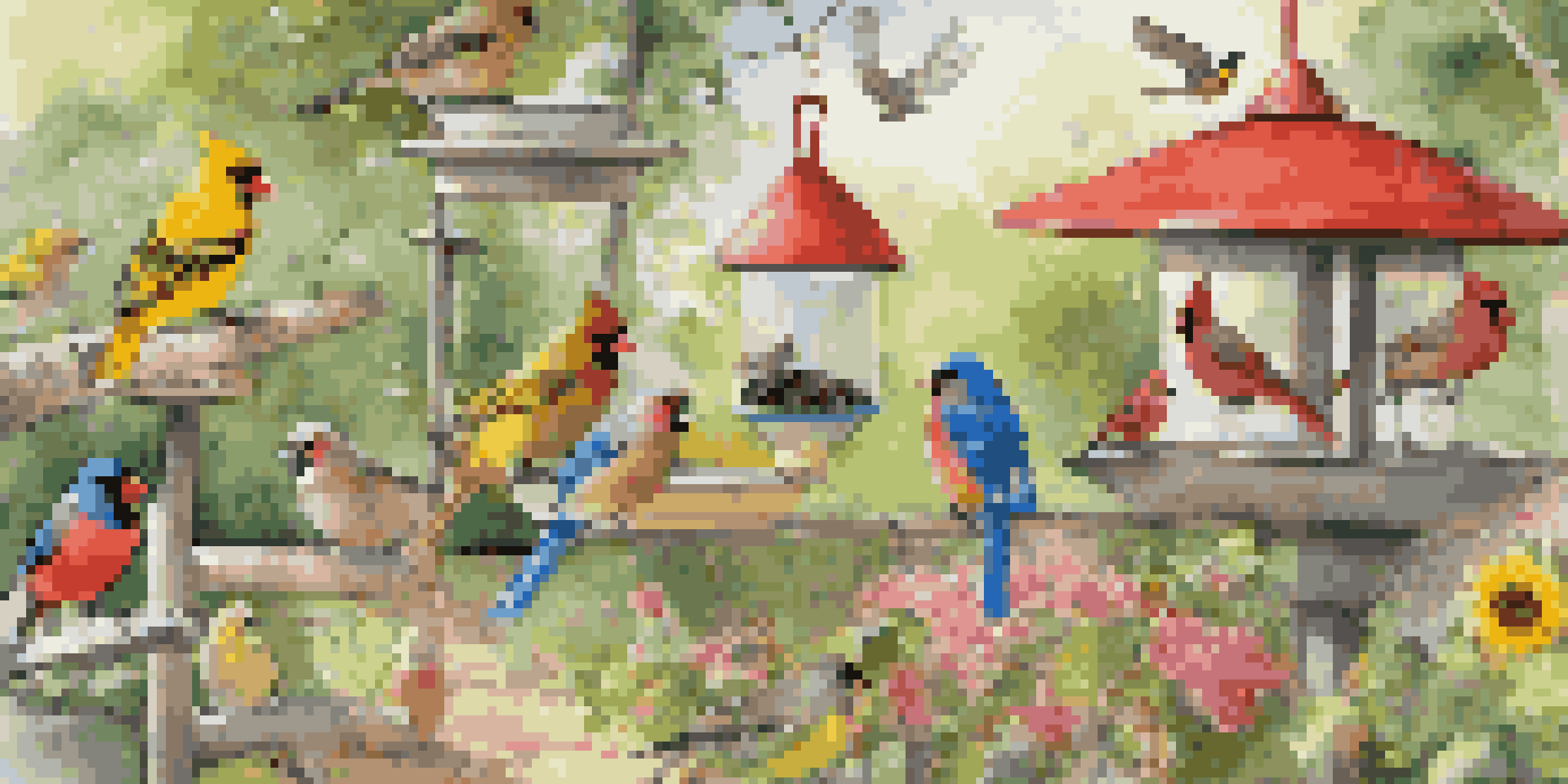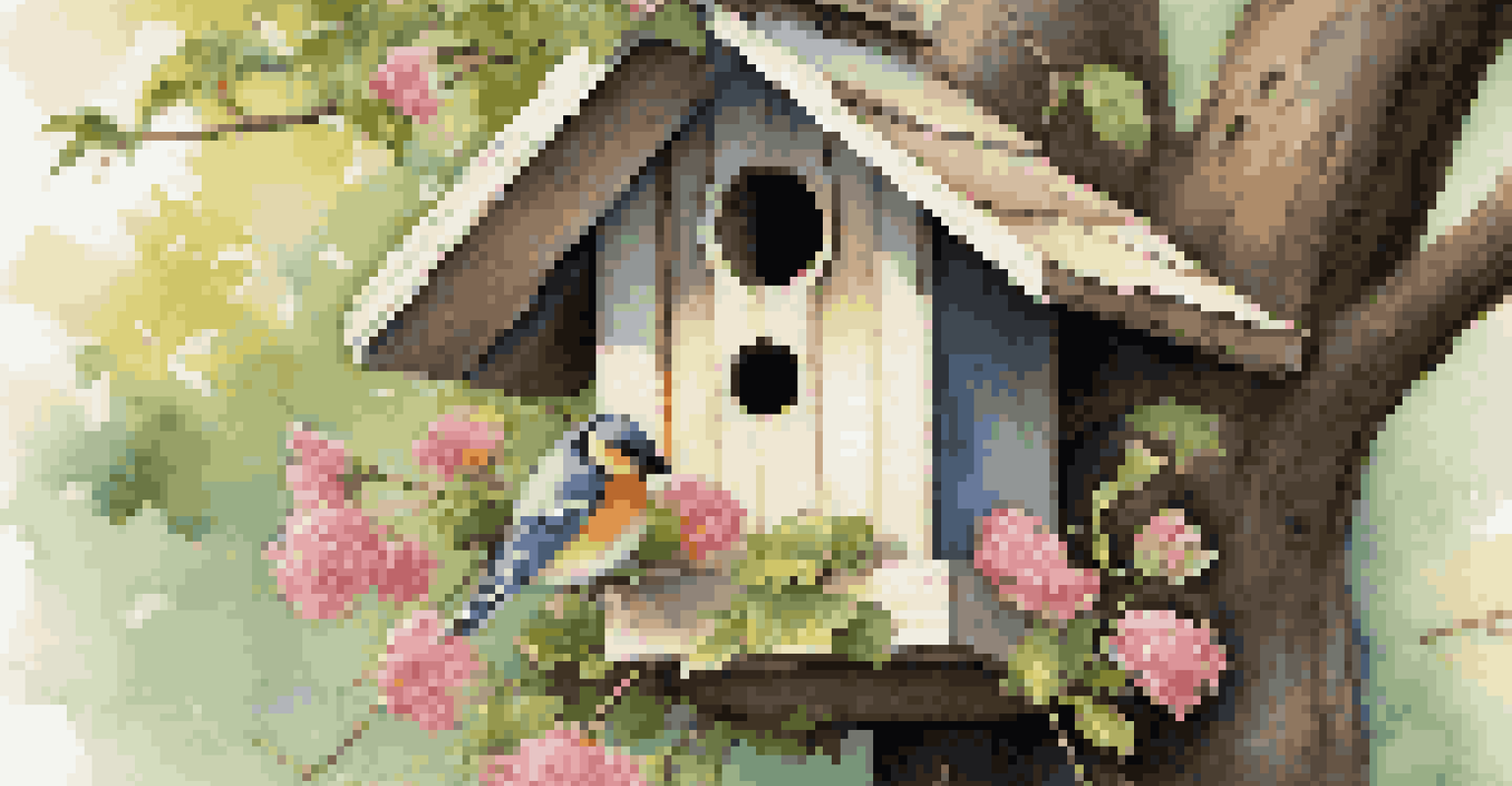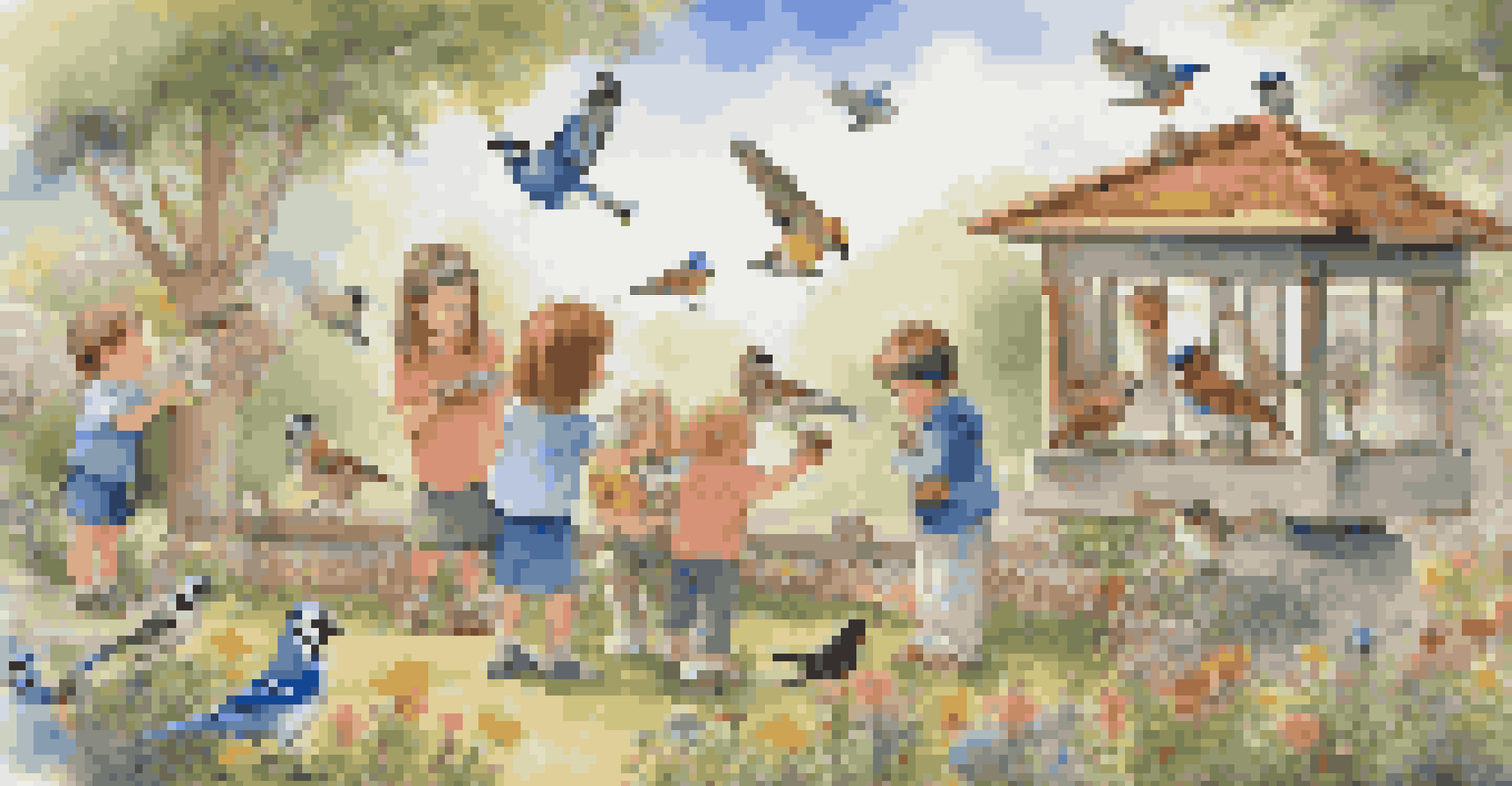Using Bird Feeders to Teach Kids About Nature and Wildlife

Why Bird Feeders Are Great Educational Tools for Kids
Bird feeders are not just decorative additions to your yard; they are fantastic educational tools. By attracting various bird species, these feeders allow children to observe wildlife up close. This hands-on experience ignites curiosity and fosters a deeper appreciation for nature.
In every walk with nature one receives far more than he seeks.
As kids watch birds interact with their feeders, they can learn about different bird species, their behaviors, and habitats. This knowledge is not only fun but also essential for understanding ecological balance. Engaging with nature in this way can spark a lifelong interest in wildlife conservation.
Furthermore, bird feeders can serve as a gateway to broader discussions about ecosystems. Children can explore topics such as food chains, migration patterns, and the importance of biodiversity. The insights they gain from these experiences can shape their perspectives on environmental stewardship.
Choosing the Right Bird Feeder for Learning
Selecting the right bird feeder is crucial for maximizing educational opportunities. There are various types, including tube feeders, platform feeders, and suet feeders, each attracting different birds. A variety of feeders can provide a broader learning experience and keep kids engaged.

For instance, a tube feeder filled with sunflower seeds may attract finches, while a platform feeder with mixed seeds might invite larger birds like cardinals. Observing these differences can lead to exciting conversations about bird preferences and feeding habits. Kids can even keep a journal to track which birds visit their feeders.
Bird Feeders Spark Nature Curiosity
Bird feeders provide kids with hands-on experiences that ignite curiosity and foster appreciation for wildlife.
Moreover, choosing a feeder that is easy to clean and refill encourages regular maintenance. This responsibility teaches kids about caretaking and the importance of providing a safe and clean environment for wildlife. It becomes a fun routine that reinforces their connection to nature.
Incorporating Bird Watching into Daily Routines
Integrating bird watching into daily routines can enhance the learning experience. Setting up a specific time for kids to observe the feeders, perhaps during breakfast or after school, helps establish a habit. This routine can create anticipation and excitement for what they might see.
The Earth is what we all have in common.
Using binoculars can make the experience even more engaging. Kids love using tools that make them feel like real scientists or explorers. This simple addition can enhance their observational skills, enabling them to identify bird species and behaviors more effectively.
Additionally, encouraging kids to take notes or draw the birds they see can further reinforce their learning. It promotes creativity while solidifying their understanding of the different species and their unique characteristics. This combination of observation and creativity makes learning about nature fun and memorable.
Understanding Bird Behavior Through Observation
Bird feeders offer a unique window into avian behavior, providing countless lessons for curious minds. Children can observe how different species interact with the feeder, including their feeding habits and social dynamics. For example, some birds may be bold and feed in groups, while others are cautious and prefer solitude.
Through these observations, kids can learn about concepts like territoriality and hierarchy within bird communities. Noticing who arrives first and how they react to newcomers can lead to discussions about competition in nature. This understanding fosters empathy and respect for all living creatures.
Choosing Feeders Enhances Learning
Selecting a variety of bird feeders enriches educational opportunities and encourages kids to observe and document their findings.
Moreover, recognizing patterns in feeding times or preferences can spark scientific inquiry. Kids may start to ask questions like, 'Why do certain birds come at specific times?' or 'What do they eat?' Answering these questions can encourage critical thinking and a deeper appreciation for wildlife and its complexities.
Creating a Bird-Friendly Environment Together
Engaging kids in creating a bird-friendly environment can deepen their connection to nature. This could involve planting native plants, creating water sources, or providing shelter. Involving children in these projects fosters a sense of responsibility and ownership over local wildlife.
For instance, native plants can attract specific birds, butterflies, and other wildlife, enriching the ecosystem. Kids can learn about the importance of native species and how they support local fauna. This hands-on experience helps them understand their role in promoting biodiversity.
Additionally, building a birdhouse or a nesting box together can be an exciting project. It teaches kids about the different needs of birds and how to provide safe habitats. This collaborative effort can create lasting memories while reinforcing the importance of safe spaces for wildlife.
Documenting and Sharing Bird Sightings
Encouraging kids to document their bird sightings can enhance their learning experience. Keeping a bird journal allows them to track what they see over time, noting species, dates, and behaviors. This not only improves their observational skills but also introduces them to the concept of data collection.
Sharing their findings with family or friends can further enrich their experience. Kids can create presentations or drawings, showcasing their favorite birds and what they learned. This opportunity to share knowledge fosters communication skills and helps them feel proud of their discoveries.
Bird Watching Connects to Ecology
Observing birds can lead to broader discussions about environmental issues, helping children understand their role in conservation.
Moreover, technology can play a role in this documentation process. There are apps and websites designed for bird watchers that can help kids identify birds and log their sightings. This blend of nature and technology can make learning more engaging and relevant in today's digital age.
Connecting Lessons to Broader Environmental Topics
Using bird feeders as a teaching tool opens the door to broader environmental discussions. For example, observing birds can lead to conversations about habitat loss, climate change, and conservation efforts. Kids can learn how these factors impact wildlife and understand their importance in preserving nature.
By connecting bird watching to larger environmental issues, children can develop a holistic view of ecology. They start to see how their actions, such as recycling or conserving water, can positively affect wildlife. This connection empowers them to become advocates for the environment.

Furthermore, discussing local and global conservation efforts can inspire kids to get involved. Whether it's participating in local clean-up events or supporting wildlife organizations, these actions foster a sense of community and responsibility. The lessons learned from bird feeders can translate into lifelong habits of environmental stewardship.